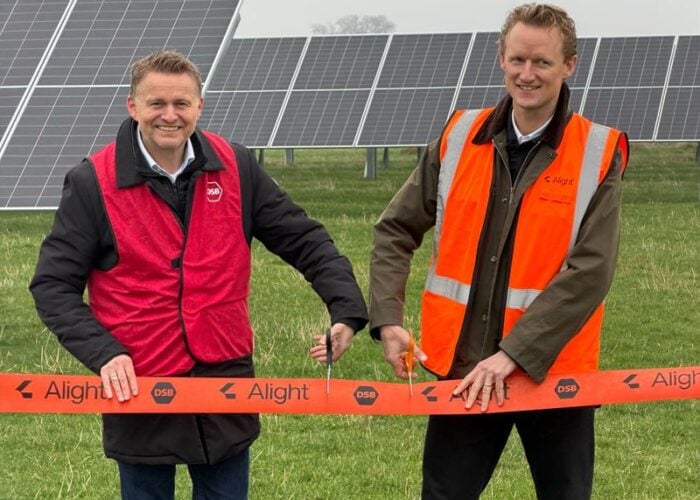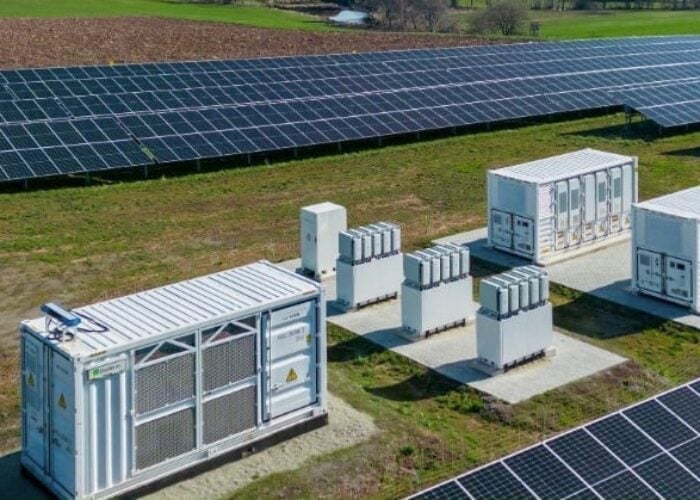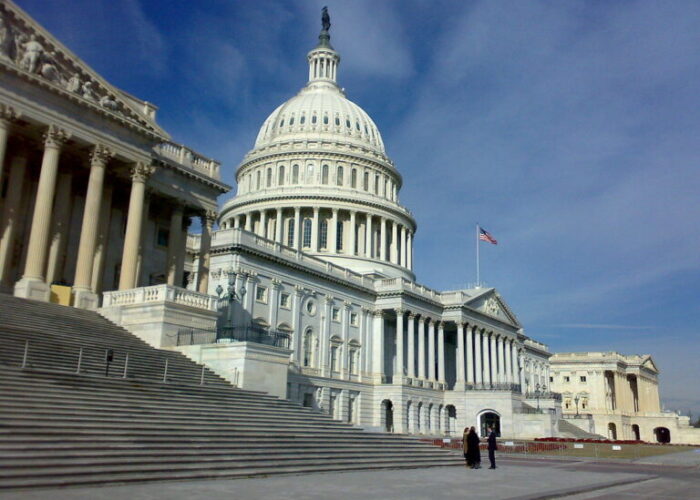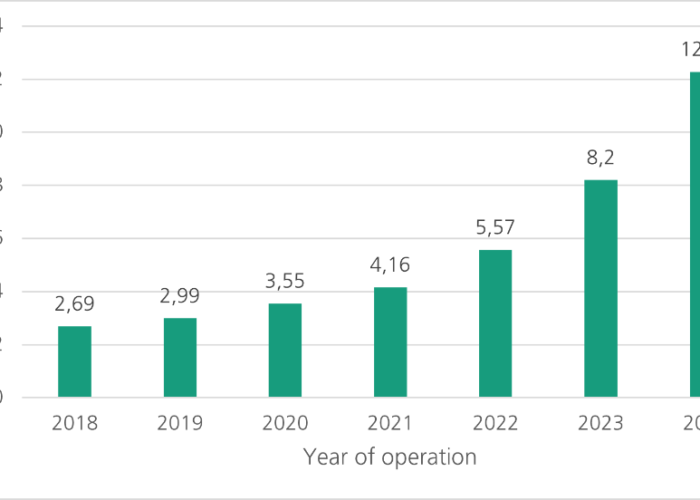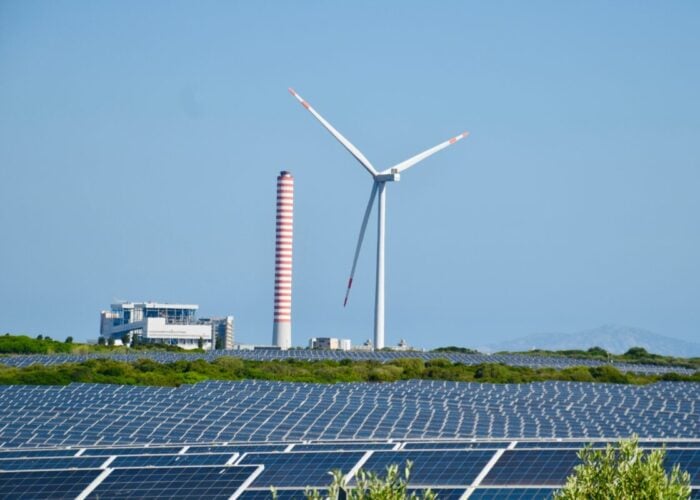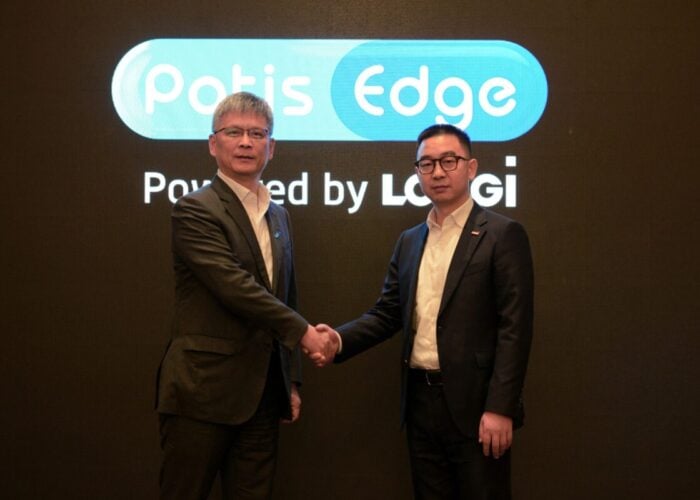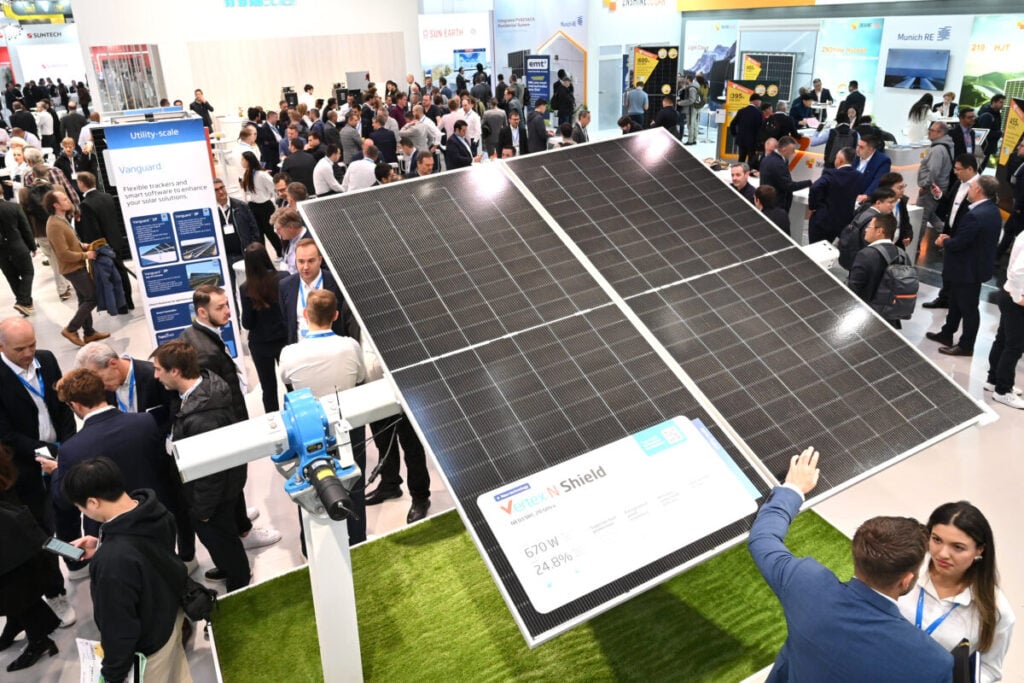
Experts from across the solar industry filled the halls of the Messe München convention centre in eastern Munich last week for this year’s Intersolar Europe event, a week of presentations and discussions that reflected on a surprisingly optimistic outlook for the European solar industry.
Last week, PV Tech reported that a major Chinese manufacturer had described the European industry as “business as usual”, a sharp contrast to some of the negative headlines that have dominated the European solar space in the last 12 years.
Try Premium for just $1
- Full premium access for the first month at only $1
- Converts to an annual rate after 30 days unless cancelled
- Cancel anytime during the trial period
Premium Benefits
- Expert industry analysis and interviews
- Digital access to PV Tech Power journal
- Exclusive event discounts
Or get the full Premium subscription right away
Or continue reading this article for free
These include Meyer Burger’s shift of operations to the US, the closure of French manufacturer Photowatt and increasingly protectionist rhetoric from the leadership of the US and China, which continue to wield significant influence over the solar industry.
A multi-faceted industry
However, alongside this optimism, there was an awareness of the fact that the European solar industry has become, and is becoming, increasingly multi-faceted, and actors in the industry need to have a greater range of technical, financial and legislative knowledge than ever before.
During presentations held at the conference portion of the event, Itamar Orlandi, director of commercial strategy at Swiss consultancy Pexapark, highlighted that “hybrid deals” had become a cornerstone of the European power purchase agreement (PPA) space, with European buyers signing deals for 2.7GW of hybrid capacity in 2024.
“What we have seen in 2024 was that, compared to previous years, there was a very big increase in hybrid deals, especially solar-plus-wind, but also in co-location with storage,” Elena Donzelli, Pexapark’s PPA transaction manager, told PV Tech Premium after the presentation.
“Including wind was improving the business case for developers, and I think this is something that, for sure, we will see this year.”
“Actually developing a solar asset is getting cheaper and easier – from a technical and engineering point of view – and the tricky part of storage is the performance management, so there you need to be quite knowledgeable, and it’s a totally different animal from your wind and solar assets,” Donzelli continued, highlighting how those in the solar industry need to be familiar with a greater range of technologies, products and services in order to make informed investment decisions.
“On one hand it’s about the data, but on the other it’s about the software and how it’s able to put together the various data flows,” agreed Marcel Suri, CEO of Slovakian data analysis firm Solargis, who suggested that an increase in the availability of data for investors and asset managers has meant more variables to consider when financing or developing a project.
“For example, project data historically juts needed weather data,” Suri continued. “Now to build a good project – which is typically a combination of PV-plus-storage – you need to have a business model in mind, and your simulation already has to come with some economic data, for example energy prices and the time series of energy prices in your region.”
Both Donzelli and Suri pointed out that making better use of this range of information available, and successfully deploying the breadth of expertise now needed in the industry, is essential to forming a compelling business case as investment in the solar industry increases exponentially. Figures from the International Renewable Energy Agency (IRENA) show that, until the end of the decade, the PV industry alone will need a massive US$397 billion in annual investment if the world is to meet its 2030 climate goals.
“The simulation starts with solar irradiance data, then it goes to megawatt hours of electricity produced, then you convert it to money [and ask]: ‘Is this the right way of building the revenue model?’” emphasised Suri.
‘Everything is so complicated’
When asked about the range of expertise needed to make informed decisions about the solar industry, other attendees at the event said that greater standardisation in administrative and corporate processes could help flatten the learning curve somewhat. When asked about the US’ increasingly hostile approach towards global tariffs, for instance, Abigail Ross Hopper, president and CEO of the Solar Energy Industries Association (SEIA) said that it could lead to a muddled, “checkerboard” approach to policy.
“On the tariff side, as we’ve heard, our president is looking to make individual deals with individual countries, so that could be a checkerboard of different tariff rates for different products, and lots of work for our trade attorneys for the foreseeable future,” Hopper told PV Tech Premium.
“What I see in my day-to-day job is that everything is so complicated,” agreed Donzelli. “The legal part of an agreement, the internal approval processes of offtakers and developers [and] PPAs are not standardised so there’s a 100-page contract and every country and deal are different.
“It takes a lot of time and people and resources and money and that’s the bottleneck in my opinion,” Donzelli continued, suggesting that, if the world is to meet its clean energy goals, it is not a lack of technical knowledge or appetite for investment that will be the limiting factor, but the sheer volume of red tape required to cut through in order to approve projects, begin construction and sign offtake agreements that would receive approval from all parties.
“It could go faster but, of course, it’s not all the same and all standardised,” conceded Donzelli, acknowledging that a desire for greater standardisation of processes would come into conflict with the fact that many markets, and technologies, are so different that imposing a ‘one size fits all’ PPA, for instance, could be damaging. This is particularly significant considering the rate at which technical developments and investment trends change in the renewable energy industry, as shown by the Pexapark figures on the growth of co-located solar and storage investments in the last year.
“But I see some improvements that could be made, and all parties involved [would benefit],” Donzelli added. “The banks would benefit from standard PPAs every time they need to review [them], and corporates would benefit from more standardised contracts.”
However, there is one area that would benefit from greater standardisation: cybersecurity. At least that’s according to Uri Sadot, cybersecurity programme director at inverter manufacturer SolarEdge and chair of SolarPower Europe’s digitalisation workstream.
“We’re working on a blueprint for a whole system [of standards] with SolarPower Europe,” Sadot told PV Tech Premium. “When we finish that I don’t expect a lot of disagreements. Some people have strong feelings and strong interest, and it’s not always been easy.
“The first time that I introduced the topic, half the group said: ‘Why should I promote regulation?’ But you think that in the next 15 years – the system lifecycle – there won’t be regulation? It’s better for us to do it as early as possible; let’s get it out of the way, let’s standardise best practices that we can all agree on as soon as we can. And, surprisingly enough, it worked.”
Cybersecurity has become a priority
Sadot was not the only attendee to highlight the importance of cybersecurity. Juan Carlos Arévalo, CEO of monitoring software developer GreenPowerMonitor, echoed Suri’s comments that there is more data than ever before in the solar industry, so there is a greater emphasis on developing robust practices to protect this data.
“We play the role of data custodian for our customers, so we cannot afford to have a failure,” Arévalo told PV Tech Premium, highlighting the potentially fatal reputational damage a company can endure should it not sufficiently invest in cybersecurity.
“Cybersecurity is becoming pivotal to us,” Arévalo continued. “I always say to my people that we can lose a customer; it’s not what we want, but we can lose a customer. But what we cannot afford is to face a cyberattack. We are a trusted partner, so we have to be a trusted voice in front of our customers; if something like that happens, everything would be destroyed.”
“S&P Global Commodities said cybersecurity is one of the top three trends in 2025 for inverters. We’re seeing it across the board, from customers to regulators to vendors,” agreed Sadot, who went on to suggest that the growth in the residential solar industry, in particular, poses a unique cybersecurity threat as the responsibility for ensuring good cybersecurity compliance could fall on individual people, rather than companies with whole teams devoted to the exercise.
Despite a nearly 5GW year-on-year decrease in residential capacity additions in Europe, interest in the sector remains high; just last week, at this year’s Intersolar event, LONGi launched a new heterojunction back contact (HBC) module specifically for use in the residential sector.
“The concern about cybersecurity is that there are some hard technical truths,” said Sadot. “Solar systems can be controlled remotely in residential and commercial settings. When you manage these systems – these fleets of devices – there are fairly well-established best practices.
“My philosophy is that a homeowner, like my aunt, should not be expected to know anything about cyber,” he continued, suggesting that responsibility should fall on companies and regulators, rather than these individual people. “But I think the real responsibility is on regulators, companies and businesses. There’s a very different cyber risk and responsibility across the different solar industries.”

